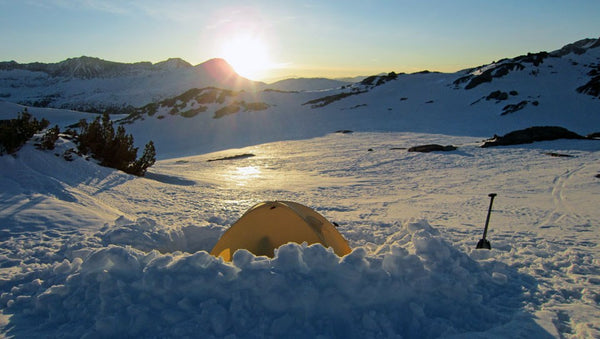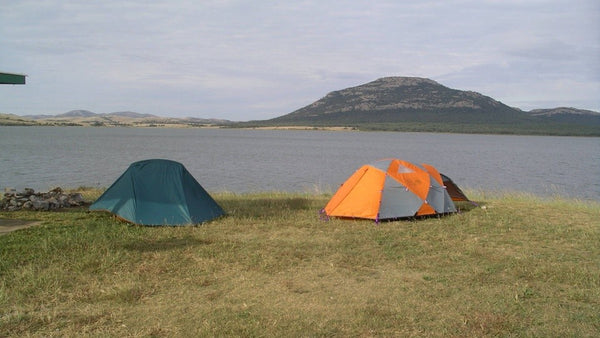Astronomy Basics: All About Stars
For many lifelong nature lovers, stargazing was a major formative experience – whether it happens on a camping trip in the mountains, during a quiet midnight paddle, or right in the middle of your back yard; that first sweeping view of a clear night sky is sure to inspire a long-lasting sense of wonder and appreciation for the natural world. And along with their overwhelming beauty, the stars carry an air of mystery which seems to arouse our deepest curiosities about the universe. Luckily, that’s been the case for most of human history – people have been aiming their telescopes upward and asking questions about the lights in the sky for thousands of years. Thanks to their efforts (and some fancy modern technologies) we now have many of the answers to those questions. So when your scout comes home from an overnight adventure with a starry-eyed look of amazement, you’ll be able to satisfy some of their curiosity.
What is a Star?
The most obvious question a young stargazer might be asking is, what exactly is a star (besides a pretty light in the sky)? Your scout might already know that the sun is the closest star to earth, and understand that the others must be similar. But still, what are these things? And how did they get there?
In simplest terms, a star is a bright, hot ball of gas held together by gravity. It consists mostly of hydrogen and helium, the two simplest elements in the universe. At the center of every star, a process called nuclear fusion is constantly occurring – this just means that atoms are smashing into each other so hard that they fuse and form new elements. For the most part, hydrogen atoms in the core of the star are smashing into each other to form helium. The energy released during these collisions is responsible for a star’s brightness and heat.
Stars are thought to form from cold, giant clouds of dust and gas molecules called nebulas or molecular clouds. Because gravity attracts all of the particles in these clouds to each other, they’ll condense and condense until they collapse into a mass called a protostar. The protostar continues to grow until it becomes massive and dense enough that the atoms in its center begin to collide hard enough that they fuse together. This nuclear fusion marks the beginning of a star’s life.
Life Cycle of a Star
Once a star has formed, the rest of its life cycle depends on its mass. More massive stars are larger, hotter, and emit bluer brighter light; less massive stars are smaller, cooler, and emit redder and dimmer light. More massive stars also have much shorter lifespans than their smaller counterparts.
Life Cycle of Average Stars – Eventually, all stars will run out of hydrogen atoms to fuel their nuclear fusion. Once this occurs, the core of a star will shrink while its outer layers expand and cool. This expansion and cooling results in the formation of a red giant star. Which (as the name suggests) is much larger and redder than stars in the main sequence of their life cycle. Red giants fuse helium instead of hydrogen, and once their helium supply runs out they enter the final stage of the average star’s life cycle – the core heats up again and the outermost layers drift away into space, leaving only the small, glowing blue core. These remnant stars are known as white dwarf stars. They’ll keep on burning until they run out of fuel completely and cool down until they become brown or black dwarves – “dead” stars that are no longer burning.
Life Cycle of Massive Stars – When massive stars run out of hydrogen fuel, they also expand and cool. But they’re so large that they become red supergiants, which are much larger and brighter than normal red giants. Supergiants are able to fuse elements even heavier than helium in their cores. This fusion of heavier elements will eventually cause the core of a supergiant to collapse, resulting in an enormous explosion called a supernova. After a red giant explodes in a supernova, it turns into either a neutron star or (if it was especially massive) a black hole.
Characteristics of Stars
Individual stars in the night sky have a few distinct visual characteristics. Most obviously, some stars are brighter than others – Sirius, the brightest star visible from Earth, can be found in the Canis Major constellation during the Northern Hemisphere’s winter. A star’s brightness as seen from earth (known as a star’s “apparent magnitude”) is the result of its size, surface temperature, and distance from the earth.
Though they might all appear fairly similar from Earth, stars also vary in color – stars with higher surface temperatures appear bluer, while those with cooler surface temperature appear more red/orange. Though it can be difficult to make out color differences in brighter stars, it is possible to discern these color differences with the naked eye.
Any lingering questions about the stars that we didn’t answer? Post them in the comments for other outdoor astronomers to illuminate. Next time you switch off your headlamps at a midnight vista, you and your scout will be equipped with additional knowledge that will make you appreciate the stars more than ever.
Leave a comment
Comments will be approved before showing up.
Also in News & Skills

8 CAMPING HACKS FOR COOL WEATHER CAMPING



Richard White II
Author